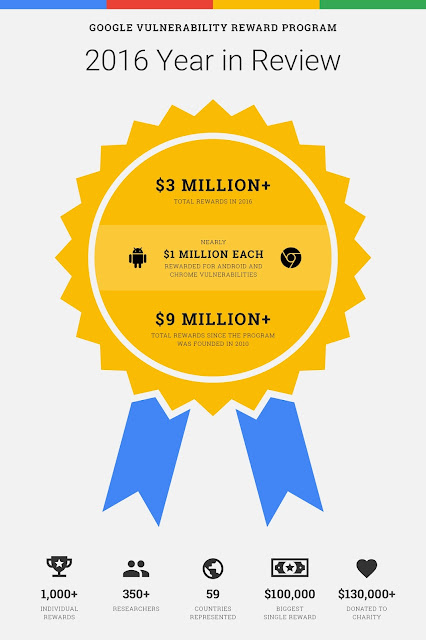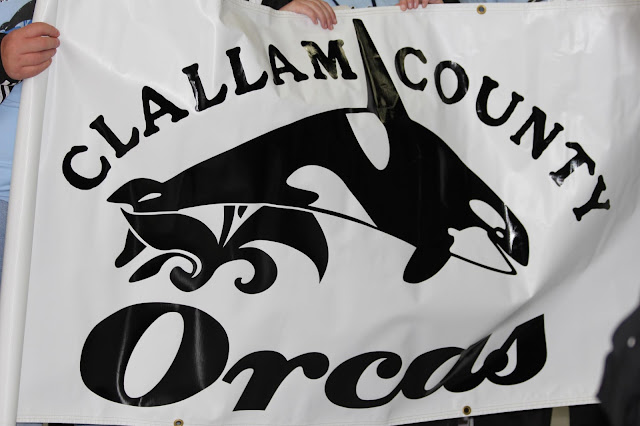We created our Vulnerability Rewards Program in 2010 because researchers should be rewarded for protecting our users. Their discoveries help keep our users, and the internet at large, as safe as possible.
The amounts we award vary, but our message to researchers does not; each one represents a sincere ‘thank you’.
As we have for 2014 and 2015, we’re again sharing a yearly wrap-up of the Vulnerability Rewards Program.
What was new?
In short — a lot. Here’s a quick rundown:
Previously by-invitation only, we opened up Chrome's Fuzzer Program to submissions from the public. The program allows researchers to run fuzzers at large scale, across thousands of cores on Google hardware, and receive reward payments automatically.
On the product side, we saw amazing contributions from Android researchers all over the world, less than a year after Android launched its VRP. We also expanded our overall VRP to include more products, including OnHub and Nest devices.
We increased our presence at events around the world, like pwn2own and Pwnfest. The vulnerabilities responsibly disclosed at these events enabled us to quickly provide fixes to the ecosystem and keep customers safe. At both events, we were able to close down a vulnerability in Chrome within days of being notified of the issue.
Stories that stood out
As always, there was no shortage of inspiring, funny, and quirky anecdotes from the 2016 year in VRP.
- We met Jasminder Pal Singh at Nullcon in India. Jasminder is a long-time contributor to the VRP, but this research is a side project for him. He spends most of his time growing Jasminder Web Services Point, the startup he operates with six other colleagues and friends. The team consists of: two web developers, one graphic designer, a developer for Android and iOS respectively, one Linux administrator, and a Content Manager/Writer. Jasminder’s VRP rewards fund the startup. The number of reports we receive from researchers in India is growing, and we’re growing the VRP’s presence there with additional conference sponsorships, trainings, and more.
Jasminder (back right) and his team
- Jon Sawyer worked with his colleague Sean Beaupre from Streamlined Mobile Solutions, and friend Ben Actis to submit three Android vulnerability reports. A resident of Clallam County, Washington, Jon donated their $8,000 reward to their local Special Olympics team, the Orcas. Jon told us the reward was particularly meaningful because his son, Benji, plays on the team. He said: “Special Olympics provides a sense of community, accomplishment, and free health services at meets. They do incredible things for these people, at no cost for the athletes or their parents. Our donation is going to supply them with new properly fitting uniforms, new equipment, cover some facility rental fees (bowling alley, gym, track, swimming pool) and most importantly help cover the biggest cost, transportation.”
- VRP researchers sometimes attach videos that demonstrate the bug. While making a great proof-of-concept video is a skill in itself, our researchers raised it to another level this year. Check out this video Frans Rosén sent us. It’s perfectly synchronized to the background music! We hope this trend continues in 2017 ;-)
Researchers’ individual contributions, and our relationship with the community, have never been more important. A hearty thank you to everyone that contributed to the VRP in 2016 — we’re excited to work with you (and others!) in 2017 and beyond.
*Josh Armour (VRP Program Manager), Andrew Whalley (Chrome VRP), and Quan To (Android VRP) contributed mightily to help lead these Google-wide efforts.

